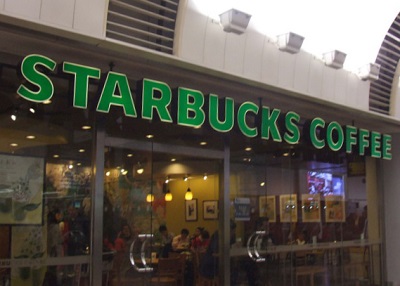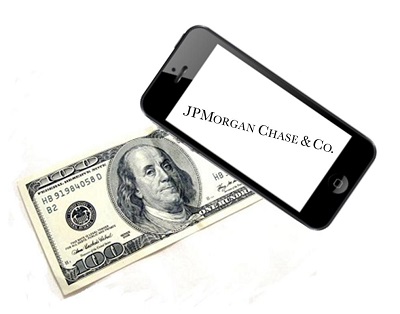The coffee giant is now embarking on the rollout of a new level of technology due to massive successes.
Starbucks is boosting the use of smartphone based solutions in its hundreds of coffee shop locations, greatly because of the tremendous successes it has seen in mobile payments.
Recent data has shown that 21 percent of payment transactions at Starbucks are completed over smartphones.
The successes that the coffee chain has seen has propelled it to the top of the mobile payments list, making the company the example for the way that mobile technology can be used to boost business and raise customer engagement. It has managed to accomplish this goal more effectively than any other company in the food and beverage service marketplace. It is precisely this message that was being shared along with the announcement from execs that the company had met the expectations of analysts for its fiscal fourth quarter earnings report. It reached a record breaking revenue of $4.9 billion, with profits of about $969 million.
Smartphone based ordering has been expanding outside the United States where mobile payments have been hot.
 The mobile ordering option was rolled out in the U.S. last December. This allowed consumers to be able to skip the line by placing their coffee orders in advance through the app on their smartphone. By September, the feature reached all 7,400 stores across the country. The feature has since been making its way into additional markets with tests being launched in Canada and the United Kingdom.
The mobile ordering option was rolled out in the U.S. last December. This allowed consumers to be able to skip the line by placing their coffee orders in advance through the app on their smartphone. By September, the feature reached all 7,400 stores across the country. The feature has since been making its way into additional markets with tests being launched in Canada and the United Kingdom.
According to execs from the company when they announced the company’s earnings, there have already been five million monthly transactions completed by customers who have been using the Mobile Order & Pay feature.
President of North American operations for Starbucks, Cliff Burrows, explained that “It has been incredible to see the adoption by customers across the country,” adding that “With each wave that we launch, the ramp rate has been quicker for adoption.”
It’s clear that even beyond mobile payments, Starbucks is continuing to lead the way in customer engagement and in revenue generation by way of shopper smartphones.
JP Morgan Chase sees major promise in the mobile commerce market
JP Morgan Chase is preparing to launch its first mobile payments service, called Chase Pay. The company expects that the service will be launched in the middle of 2016, competing with other companies that have already released their own payment services. JP Morgan Chase sees significant promise in the mobile payments space, as many consumers are beginning to use their smartphones to shop for products both online and in physical stores.
Chase Pay aims to make it easier for consumers to shop for and purchase products that they may be interested in
Chase Pay will allow consumers to pay for goods and services in physical stores as well as within mobile applications. Retailers are expected to support the mobile payments service, allowing customers to pay for products through their mobile websites. The service will be available to approximately 94 million Chase customers. Notably, Chase has partnered with Merchant Customer Exchange, which has also been working on its own mobile payments platform that is designed specifically for large retailers.
Large retailers are looking for ways to engage mobile shoppers
 The Merchant Customer Exchange’s CurrentC platform is meant to provide large retailers with a way to effectively engage mobile consumers. The organization itself is comprised of large retailers, such as Walmart, Target, and Best Buy. These retailers have all agreed to use the CurrentC platform, but the service has yet to see a commercial release. As such, retailers are looking for ways to embrace mobile payments in order to better serve consumers that are interested in shopping with their smartphones and tablets.
The Merchant Customer Exchange’s CurrentC platform is meant to provide large retailers with a way to effectively engage mobile consumers. The organization itself is comprised of large retailers, such as Walmart, Target, and Best Buy. These retailers have all agreed to use the CurrentC platform, but the service has yet to see a commercial release. As such, retailers are looking for ways to embrace mobile payments in order to better serve consumers that are interested in shopping with their smartphones and tablets.
Chase Pay may be able to compete with other services if it manages to provide better security
Chase Pay will face significant competition from services that have already established a foothold in the mobile commerce space. Whether or not the service will prove popular among consumers may depend on the security features it offers. Security has been a significant problem for the mobile commerce space for some time, with many consumers citing recent data breaches as the reason they will not use mobile payments services.
 The mobile ordering option was rolled out in the U.S. last December. This allowed consumers to be able to skip the line by placing their coffee orders in advance through the app on their smartphone. By September, the feature reached all 7,400 stores across the country. The feature has since been making its way into additional markets with tests being launched in Canada and the United Kingdom.
The mobile ordering option was rolled out in the U.S. last December. This allowed consumers to be able to skip the line by placing their coffee orders in advance through the app on their smartphone. By September, the feature reached all 7,400 stores across the country. The feature has since been making its way into additional markets with tests being launched in Canada and the United Kingdom.
 The Merchant Customer Exchange’s CurrentC platform is meant to provide large retailers with a way to effectively engage mobile consumers. The organization itself is comprised of large retailers, such as Walmart, Target, and Best Buy. These retailers have all agreed to use the CurrentC platform, but the service has yet to see a commercial release. As such, retailers are looking for ways to embrace mobile payments in order to better serve consumers that are interested in shopping with their smartphones and tablets.
The Merchant Customer Exchange’s CurrentC platform is meant to provide large retailers with a way to effectively engage mobile consumers. The organization itself is comprised of large retailers, such as Walmart, Target, and Best Buy. These retailers have all agreed to use the CurrentC platform, but the service has yet to see a commercial release. As such, retailers are looking for ways to embrace mobile payments in order to better serve consumers that are interested in shopping with their smartphones and tablets.